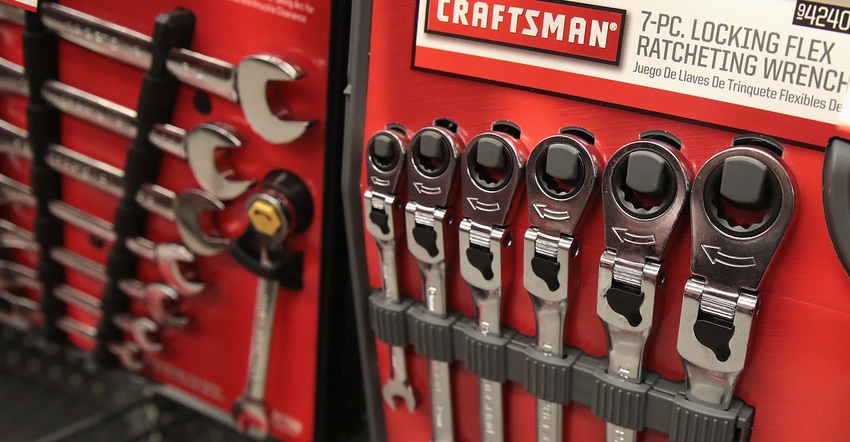March 9, 2017

Perhaps I should have suspected that something was up a few years ago when Craftsman tools started showing up in the local Ace Hardware store, and even Costco. Sears and K-Mart had merged years before and the Craftsman tools moved under the blue light back then too. Now comes word that Stanley Black & Decker has acquired Craftsman, a kind of changing of the tool guard.
Sears, the premier catalog retailer from history - remember the Sears Catalog - provided farms and farmers access to a lot of different things - clothes, toys, appliances and yes, tools. My dad was a kind of garage mechanic, when he wasn't doing his duty for the Navy, and if he was buying tools they were Craftsman.
My guess is that farmers have a few Craftsman wrenches in the toolbox along with their lifetime warranty. Sure, over the years the Snap-on and Matco trucks have found farms and changed the shape and view in the machine shop, but Craftsman reigned supreme for a long time.
This changing of the guard isn't bad news. It's obvious that Stanley Black & Decker understand the tool business and in its press release and fact sheet the company notes the tremendous consumer awareness of the brand. James M. Loree, company president and CEO, even noted in his comments that "we will invest in the brand with a focus on quality, innovation and U.S. manufacturing."
All good news for the brand. A look at the history timeline on the old Craftsman website shows that in 1927 Sears acquired the Craftsman trademark for a mere $500, and the company started touting the tools as "superior to the Fulton and Trojan tool lines." Ad speak was pretty blunt back then, and both the Fulton and Trojan names - for tools - are long gone. The first Craftsman power tools showed up in the Sears Catalog in 1929. Remember, this is the same catalog that would sell you a house.
Even during the Depression, Craftsman was innovating. The first vanadium steel was introduced and was touted as being 50% thinner and 200% stronger than previous models. Tough means something with tools. The company got into the lawncare machine business in the 1930. Interesting stuff.
Craftsman tools were widely used during WWII from aircraft schools to projects in the Pacific Islands.
The company had a wide range of marketing and tool innovations from tool trucks that went around the country. It wasn't a new idea Snap On had already been doing it, but it was a success.
In the socket wrench world, Craftsman introduced an interesting innovation - the quick-release ratchet in 1966, which became what Sears called "one of the most popular wrenches in the hand tool industry."
There were other innovations, and marketing approaches in the company's history, all to keep the brand in front of the consumer. At the turn of the century Craftsman tools and their marketing branched out being sold at Army and Air Force Base Exchanges; entering the line at K-Mart and even with the launch of its own website in 2008.
There's been a comic book (yes a comic book where a Craftsman system saves the Justice League - we will not comment that the Avengers didn't need a tool guy to help them). A concept store to show off tool tech; and even a Makecation - you know a vacation where you make stuff.
Today, the history of Craftsman changes and heads away from Sears - a retailer that's seen a lot of hardship in the last few years as internet sales have gutted retail margins.
Stanley Black & Decker will start work immediately to make Craftsman products available to more people. The company has a premier position at big box home improvement centers, and chances are you're going to start seeing Craftsman brands there. The tools will still be available at Sears as well, so that won't change.
Yet another chapter in Corporate America technically closes, while a new one begins. I still remember the new set or Craftsman wrenches we bought for my Dad when we were kids. They shined when new, and darn if they didn't shine long after they'd been worked hard on cars, trucks and boat motors in our garage.
Good luck to the new owners of Craftsman. Stanley and Black & Decker also have great tool histories, adding Craftsman should be no problem. You can learn more by visiting a site devoted to the future of Craftsman.
About the Author(s)
You May Also Like






